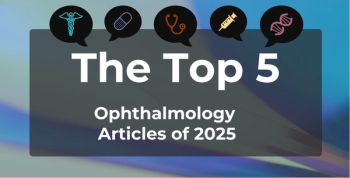
Review Finds EORTC QLQ-MY20 Useful, Robust 25 Years After Development
The treatment landscape for multiple myeloma has shifted since European Organisation for Research and Treatment of Cancer Quality of Life Multiple Myeloma Questionnaire (EORTC QLQ-MY20) was first developed in 1996.
The European Organisation for Research and Treatment of Cancer Quality of Life Multiple Myeloma Questionnaire (EORTC QLQ-MY20) remains a widely used and psychometrically robust instrument 25 years after the tool’s development
Findings were published in
“While no specific problems were identified from the published literature, qualitative interviews are ongoing to ensure new concepts and side effects are included that may arise from patients receiving novel treatments or from longer survival with multiple lines of treatment,” the authors wrote.
The tool was first developed in 1996 to assess health-related quality of life (HRQOL) in patients with multiple myeloma. Since its introduction, new therapies have helped prolong survival in patients and new combination agents are likely to impact HRQOL outcomes and its measurement, the researchers explained.
However, multiple myeloma remains an incurable and progressive disease. The condition’s symptoms, along with treatment adverse effects resulting from multiple lines of therapy, can take a toll on patients’ HRQOL. These can include fatigue and pain.
To better understand the use of the QLQ-MY20 and reported methodological issues, the authors searched an electronic database to identify any studies that used the metric or assessed its psychometric properties.
The tool was used in 21 (32%) interventional studies and 44 (68%) observational studies. Data also showed that the publication of QLQ-MY20 data in clinical trials increased over time. In clinical studies, it was common to include relapsed patients with those with myeloma. These studies also tended to assess a range of combination therapies, the researchers explained. The measure includes 20 items across 4 domains.
Additional analyses produced these results:
- QLQ-MY20 subscales—disease symptoms (DS), side effects of treatment (SE), future perspectives (FP), body image (BI)—were defined as secondary (n = 12; 55%) or exploratory (n = 7; 32%) trial end points, particularly DS (n = 16; 72%) and SE (n = 16; 72%)
- Validation articles demonstrated that all domains performed well regarding internal consistency reliability (P > .7), test-reset reliability (intraclass correlation coefficient, > 0.85), internal and external convergent, and discriminant validity
- Four articles reported a high percentage of ceiling effects in the BI subscale; all other subscales performed well regarding floor and ceiling effects
“The QLQ-MY20 module is used in conjunction with the EORTC Core Quality of Life Questionnaire (QLQ-C30) designed for use in oncology patients more generally,” the authors explained.
“The [multiple myeloma] module has been translated into over 70 language versions, is a multiple myeloma–specific measure used most globally, and is one of the most extensively validated instruments for use in multiple myeloma clinical research,” they added.
When the tool was first validated, most clinical trials included patients with a new diagnosis and limited data were available for relapsed/refractory patients. In the years since, the treatment landscape has undergone a dramatic change and patients often undergo multiple lines of treatment and relapses, the researchers said.
Based on their findings, they note a revised version of the QLQ-MY20 is warranted to make sure all concepts of interest are captured. Additional studies could also address the limitations of the tool.
“To maintain content validity in today’s [multiple myeloma] treatment landscape (ie, to ensure the instrument is relevant to [multiple myeloma] patients and captures their symptoms and side effects of novel treatments and later lines of therapy), qualitative interviews with patients and health care professionals and an update to the QLQ-MY20 is underway to incorporate findings,” the authors concluded.
Reference
Forde K, Cocks K, Wells JR, McMillan I, Kyriakou C; EORTC Quality of Life Group. Use of the European Organisation for Research and Treatment of Cancer multiple myeloma module (EORTC QLQ-MY20): a review of the literature 25 years after development. Blood Cancer J. Published online May 16, 2023. doi:10.1038/s41408-023-00815-9
Newsletter
Stay ahead of policy, cost, and value—subscribe to AJMC for expert insights at the intersection of clinical care and health economics.








